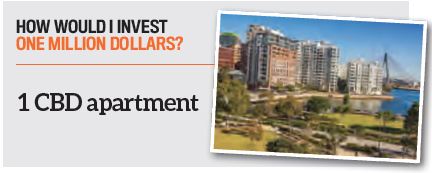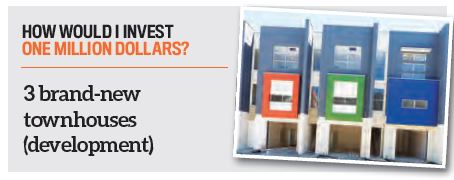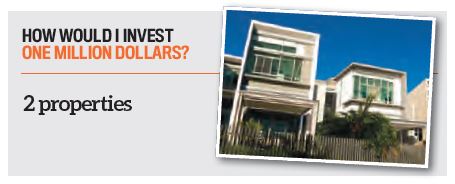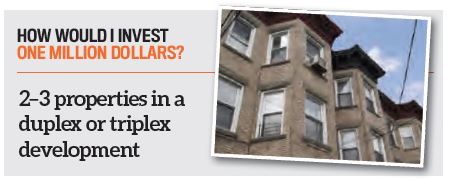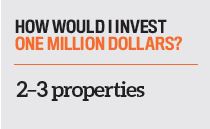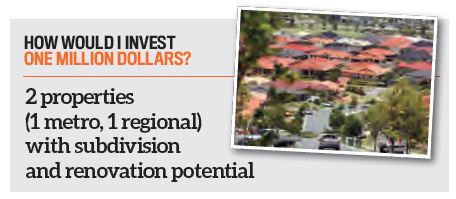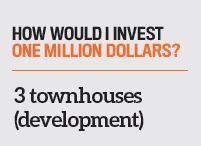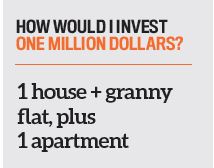It’s the investing equivalent of winning the lotto: “If you received $1m today to invest, how would you spend it?”
This is the question we posed to a number of former Your Investment Property Investor of the Year winners and runners-up, in order to get their top tips and strategies for property investment.
Our goal was simple. We hoped to get a great range of ideas and advice, direct from successful investors who had managed to turn their property goals into action, so we could help inspire our readers to think about the opportunities that are out there.
And did our investors ever deliver!
.jpg)
In a testament to the fact that investing is a truly individual journey, with a number of different options available to suit different risk profiles and strategies, we received a broad range of ideas, strategies and suggestions.
We hope that over the following pages you will be inspired to think about your next move so you can take another next step forward in your property investment journey.
INVESTOR
ROB WILLIAMS
Runner-up, inaugural Investor of the Year Awards 2008
 With the knowledge I’ve gained since I started investing in real estate 10 years ago, I would invest $1m today quite differently to how I invested at the start of my property investment journey.
With the knowledge I’ve gained since I started investing in real estate 10 years ago, I would invest $1m today quite differently to how I invested at the start of my property investment journey.
My original strategy was to buy relatively inexpensive apartments and villas close to the city.
While that approach worked very well for me for the first few years, I have learned over the long haul that residential real estate is not a scalable investment model. In other words, a portfolio reaches a point at which incremental additions to it do not translate to incremental growth in revenue or portfolio value.
Starting out, I bought as many properties as I could with the cash and borrowing capacity I had available to me. Over the years I’ve learned, though, that if you have 10 properties, then you have 10 stoves, 10 lots of floor covering, 10 air conditioners and 10 hot water systems that need replacing periodically. In addition, there are other maintenance tasks such as painting, which can be expensive and require a period of vacancy.
Today, given the ability to invest $1m, I would spend the entire amount in Melbourne on one well-located apartment in a sought-after complex, and if I had any cash left over I’d invest it in high-yield shares to help my cash flow.
A prime example of the type of property I’d be buying today if I had $200,000 in cash and borrowing capacity of up to $800,000 would be a two- or three-bedroom apartment in a complex like the huge Park Apartments in Port Melbourne. It’s a large art deco-styled development with a resort feel to it, surrounded by beautiful parks, just a five-minute walk from the beach, and minutes by tram from the CBD.
Rental properties here are snapped up very quickly and properties for sale command attractive prices as Park
Apartments has historically been a highly sought-after complex with the legendary Becton build quality that is second to none.
Being across the road from the leafy and much more expensive Albert Park precinct is also a big plus.
"I would invest $1m today quite differently to how I invested at the start of my property investment journey"
This type of property is not to be confused with the many high-rise apartments that are growing like weeds around the inner city. I wouldn’t touch them with a barge pole.
To summarise what I’ve learned over the years: scarcity and desirability are the key drivers of capital growth. The apartment complex I’ve highlighted as my number one investment pick, while quite large, is one that cannot be further developed and is of a build quality and apartment size we’re unlikely to see again in an age when new construction is built down to a budget and not up to a standard, which takes care of the scarcity side of the equation.
The keen interest across multiple demographics when an apartment hits the market, and the extremely low rental vacancy rate in this predominantly owneroccupied complex, ensures that desirability will remain strong in the future.
..........................................................................
INVESTOR
PRUE MUIRHEAD
Investor of the Year 2009
 If I were given $1m to invest now, I would most likely do a property development. I have always been a ‘buy, renovate and hold’ investor looking for positive-geared rental returns and capital growth; however, my bucket list involves a property development. As I have never done a development before
If I were given $1m to invest now, I would most likely do a property development. I have always been a ‘buy, renovate and hold’ investor looking for positive-geared rental returns and capital growth; however, my bucket list involves a property development. As I have never done a development before
I would most certainly use my $1m towards this.
There are many locations in the South Australian metro area where you can buy a decent block of land for $400,000–$450,000; these areas include suburbs in the City of Marion council area. I would buy a block of land (750sqm) for around the $400k mark and build three townhouses on it, at $200,000 each to build and with 250sqm of land each.
The City of Marion council area is close to the beach, the Adelaide CBD, Flinders University and public transport, and is only minutes from Westfield Marion, which houses over 300 specialty shops and anchor department stores – plus the southern hemisphere’s largest cinema complex.
My strategy has always been to buy and hold. Once these three investment properties were built, by holding them my $1m development would return me $1,350 per week, at $450 per property in rental returns ($450 per week x 52 weeks x 3 properties = $70,000 per annum gross returns per year, or a 7% return).
The tax savings would be considerably large as I could claim for depreciation with these new properties. Once built, the true value would be approximately $450,000 each, making the total end value $1.35m. I would not sell these properties as that would mean I’d have to pay capital gains tax and GST; instead, I would hold them for at least five to seven years.
The next benefit would be to hold all three properties for the long term. Most of the areas in the City of Marion have seen an average of approximately 5% capital growth over the last 10 years. Using these historical figures, my $1m development would actually be worth approximately $1.72m in five years, and $1.9m in seven years.
Over this period of time, the capital growth alone would give me an additional $800,000 in wealth over seven years ($800,000/7 years/52 weeks = $2,197 per week for seven years!).
Plus, I would have a positively geared property, with a rental income of $1,350 per week.
Simply put, my $1m investment (which could stretch to $1.1m to allow for stamp duty and the additional costs of developing; it’s important to allow for contingencies) would end up bringing me over $800,000 in profit/capital growth over seven years, plus $500,000 in gross rental income (before expenses).
Therefore, I would achieve $1.3m in profit/income in total ($800,000 + $500,000), which is 11.6% per annum compound growth (6.6% rental yields + 5% capital growth per year). I certainly couldn’t go to work and save $3,571 per week for seven years, so I’m thinking this is a good deal!
..........................................................................
INVESTOR
RALPH NICHOLSON
Highly commended, Investor of the Year Awards 2015
 With property investing, history has clearly shown that if we invest in areas offering major returns, we take major risks.
With property investing, history has clearly shown that if we invest in areas offering major returns, we take major risks.
As a seasoned investor I certainly have the capacity to buy in areas like Port Hedland and Karratha, but be assured, I would determine the bottom of the market and would sell before the peak. Determining these two points in the cycle gives me the ability to purchase without competition and to sell before the market turns. Never fall in love with the returns without thinking of the inherent risks of going over the peak and not being able to secure a buyer. You will ride the healthy returns right to the bottom of the market just like the proverbial barrel over Niagara Falls.
I said I could buy in those markets, but would I really? Hell no!
If I had a million dollars to invest, I would spread it around different markets. One thing I have noticed about my portfolio is that different properties rise at different times amid different cycles. The beauty of the property cycle is that we can revalue properties at the high points of individual markets, draw
equity, and not value the slower-growing properties until they perform.
"Understanding the individual cycles is really important for a property investor."
My first purchase would be in Fremantle, WA. Fremantle is a town that has a real buzz and a great vibe. From live music to craft beer, Fremantle has the lot. It was named one of the top 10 cities in the world to visit in 2016 according to Lonely Planet. The median price has dropped $125,000 in the last year and, as an investor, I know it will come back. Offshore oil and gas, along with the mining industries, have dropped precipitously. Recent government changes to 457 Visas will improve work prospects for the offshore industry, and the mining sector will turn around. We know it; it is just a matter of the time frame. That’s why ‘Freo’ ticks my box big time.
As my first purchase I would buy a three-bedroom cottage for slightly below the median price at $600,000, plus $26,000 in purchasing costs for a total of $626,000. My rent would be $500 per week, or $26,000 annualised.
The cost of maintaining the loan at a competitive rate of 4.2% would be $26,292. Twelve months ago, the same property would have cost me at least $100,000 more, and as property investing is the art of creating money through equity or cash flow gains, this deal is excellent.
The less glamorous corridor between Brisbane and the Gold Coast has the growth drivers to make it a sound and stable investment area. Employment, education and infrastructure are not sexy, but they do make for good fundamental growth drivers. Nestled between the third- and sixth-largest cities in the country, properties in Crestmead should do really well.
My second purchase would balance out my cash flow. I would buy a four-bedroom family home in Crestmead, Queensland, for slightly below the median price at $310,000, plus $15,000 in purchasing costs for a total of $325,000.
My rent would be $380 per week, or $19,760 annualised. The cost of maintaining the loan at 3.99% would be $13,650. I am definitely cash flow positive, but at this point I will look to increase income.
Understanding local town planning is vital to strong investing. I know it is not the most stimulating topic, but this is where true gains can be made and, most importantly, my risk significantly reduces when extra income is discovered. It is there; you just have to find it. Remember, if something is difficult for you, it is an opportunity to go where the lazy investor won’t go. Secondary dwellings (granny flats) and duplexes are great, as they provide extra income and therefore security for the rest of my portfolio.
"I sleep well at night and I have the breathing space to reinvent myself. Balancing the cash flow of the portfolio is really important"
My total spend to date is $951,000. I have a surplus of $49,000 to use towards my extra income from the Queensland property, or to improve the rental return from both properties. I will spend it, but spend it wisely.
Risk mitigation is fundamental to investing, which is why I deliberately buy at or below the median price. When property markets enter a downturn, the properties at the high end of the median suffer and the properties at or below the median are buffered. I call it the blue-collar effect. People don’t always need to buy the most expensive houses in an area, but they always have to live in an affordable house.
Just over 12 months ago, I lost my well-paid job as a marine engineer. Shipping in Australia is in a downturn, and my job, along with those of 27 crewmates, was cut. If I had been in a position where my
overall portfolio was negatively geared, how would I be paying the difference? I wouldn’t have the necessary income and would, most definitely, be forced to sell.
I can assure you, I sleep well at night and I have the breathing space to reinvent myself. Balancing the cash flow of my portfolio is really important to me from a risk perspective. The art of investing is being able to stay in the market to allow your carefully chosen assets to grow. And remember: no great structure ever rises out of a poor foundation.
..........................................................................
INVESTOR
STEVE RYAN
Investor of the Year 2015
.jpg) I'd employ an active strategy to manufacture a chunk of equity and boost cash flow. Patience is a virtue, but why wait if you don’t have to?
I'd employ an active strategy to manufacture a chunk of equity and boost cash flow. Patience is a virtue, but why wait if you don’t have to?
With a great team in place (town planner, broker, solicitor, etc) my sights would be set on an LMR-zoned block – ideally a corner – within 10km of the Brisbane CBD, for subdivision and construction. I’d buy in a suburb undergoing gentrification, such as Moorooka, which remains very affordable compared to its surrounding suburbs, yet has a lot to offer.
Blocks as small as 520sqm have been subdivided into two and blocks over 800sqm into three. These can be found in the $600–$850k range. In a perfect world, the existing dwelling would not need to be relocated and the subdivision would simply be a matter of paperwork and time. These deals are out there but sell fast, so preparation is key. Know your market, know value, know how to quickly identify an opportunity, do your due diligence and be ready to pounce when an opportunity presents itself!
A town planner will be incredibly helpful in the searching process, quickly weeding out duds and helping find winners, and also when it comes time to lodge your development application.
With the subdivision complete, options would include selling one lot to reduce debt/improve cash flow or turbocharging your portfolio by constructing a new dwelling on a new lot. With substantial depreciation and a good rental income, this is a great option for a long-term hold.
At the end of the process, I’d increase my loan to 80% of the new value and park the money in an offset account until the next opportunity comes along.
If I had reached a limit in my borrowing capacity at this point, I’d consider buying shares in Tesla, Google and Amazon for a 10-year hold with some of the leftover equity.
..........................................................................
INVESTOR
KESHAV JHA
Investor of the Year 2016
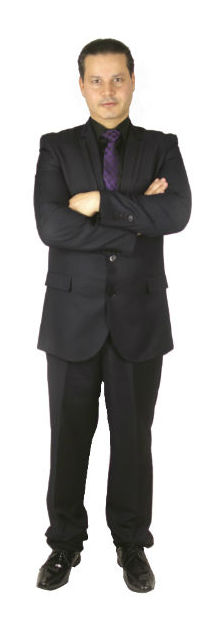
There are different variables to consider when investing $1m. A few things to think about would include the investor’s current financial circumstances, age, risk appetite, short-term and long-term goals, and social and family commitments.
Based on my property investment strategies, I would use $1m to purchase cash flow positive investment properties. I would look in areas such as the following:
All of these properties would be detached, freestanding houses located in growth corridors within 40km of a CBD or capital city, and would be no more than one to six years old with three to four bedrooms, two bathrooms, and a double garage. These growth corridor suburbs have great infrastructure, public amenities, good schools, train stations, and are near motorways and freeways, ensuring fast access to the CBD.
Any properties I purchase would have investment loans at 80% LVR, spread across different lenders in order to make the portfolio more diversified from a lending perspective. None of the properties would be cross-collateralised. All the loans would be interest-only fixed for at least three to five years at 4.09% with these lenders.
All properties would have landlord insurance that includes building and contents cover to protect against any damage by tenants or an act of nature.
The key criteria for property selection is that each property must be $2,500–$3,000 cash flow positive before any tax benefits, and before any tax depreciation benefits are taken into consideration (which would depend on an individual’s earnings every year). With recent changes to depreciation claims, the benefit from depreciation deductions may be bit less than previously achieved.
I would continue to hold all properties in my portfolio for at least 20 years. At the end of 20 years, I would sell as many properties as required to pay off the outstanding debt and capital gains tax, making the rest of the properties in my portfolio completely debt-free. The income derived from property rentals could be used for living and supporting my lifestyle.
..........................................................................
INVESTOR
LEANNE JARCHOW
2nd runner-up, Investor of the Year Awards 2016
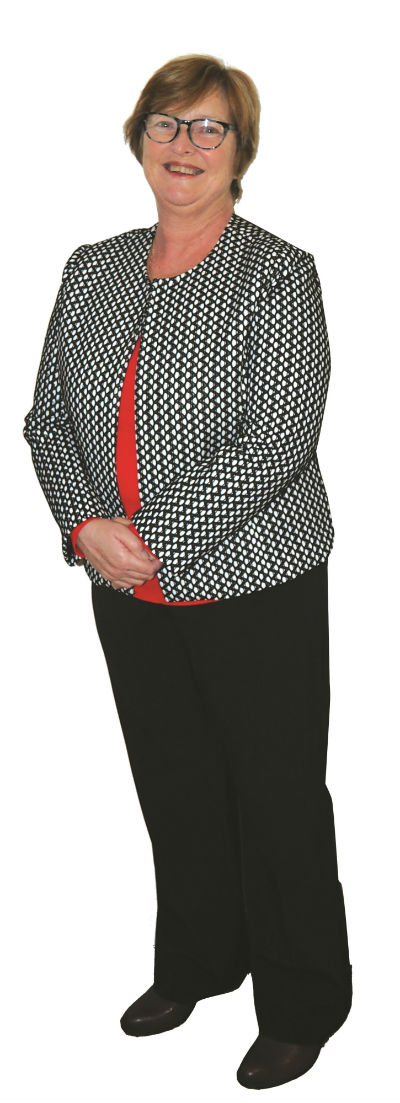 With property in the Melbourne market being quite hot, I would look to spread my risk while maintaining my particular strategy of buying to subdivide rather than purely obtaining capital growth on a single property.
With property in the Melbourne market being quite hot, I would look to spread my risk while maintaining my particular strategy of buying to subdivide rather than purely obtaining capital growth on a single property.
All indications for 2018 suggest that the market will slow in the metropolitan area, while the regional areas are less volatile but don’t provide strong capital growth unless you value-add.
With $1m I would allocate $650,000 for a metropolitan purchase that offers the opportunity to subdivide and build, while using $250,000 for a regional property to do the same. A good area for growth that remains affordable may be the outer-eastern suburbs, but at that price you will have to do some work.
Areas such as Lilydale, Kilsyth and Ferntree Gully still have a few hidden gems. Likewise, regional towns such as Colac and Shepparton are showing reasonable returns within my price bracket. That leaves $100,000 for development and some renovations.
Once the properties were subdivided I could sell them and have plenty of change to do something else. Even if I were to build on the new subdivisions at a cost of $220,000 and $180,000 respectively, the weekly incomes would be $420 and $320, and would be positively geared if they were financed.
The thing to remember with this process is that you need to be right on top of your project time frame and make clear decisions about the end product as each marketplace has a different demographic – if you get this wrong, you will be holding a product that is not appealing to its market.
In the metropolitan market, if it remains as it currently is, you could probably sell the land of the rear block for something in excess of $350,000 and retain the original house. This would be unlikely regionally and you would probably need to build to gain the return from the new land.
If you were to simply rent the newly built properties out, you would also have the opportunity for depreciation. The process of developing involves quite a bit of work, but the outcomes can be very rewarding and set you up for the future. Bearing in mind that time is money, you would really want to see these projects completed with 12 months.
To do this you must control all the processes tightly, but it is doable if you get all your ducks in a row and have things such as subdivision permit applications in place before your purchase settlement. It’s no place for the faint-hearted, but it’s certainly worthwhile
..........................................................................
INVESTOR
ANGELA SANTALIA
Highly commended, Investor of the Year Awards 2016

It has never been our strategy to buy and hold property and wait for the market to increase the value. Now more than ever, we believe it is simply not good enough to wait for the market to raise property values… ‘Traditional investing’ we call it. It can take a long time, may never happen or, even worse, you may need to weather a downturn along the way!
If we were given $1m to invest with today, we would use the cash to develop a block of land in
an affordable suburb as close to a major city as possible (where it is feasible to buy a development site). It all comes down to the figures.
When complete, each individual unit or townhouse, etc, must still be considered affordable, ie valued on completion at around $450,000 to $500,000 each. So the cost of the block, the cost to build and our profit must equate to that.
Here are some basic figures for a development in progress now in the Western Suburbs of Melbourne, 9km from the CBD, in a growth corridor of affordable living. For a three-townhouse development (two-bed, two-bath, single garage), the cost of the block at $450,000, plus the cost to build (council, demolition and build fees, plus interest if applicable) at $600,000 = $1.05m in total development costs. With $1m to spend, we would need to borrow the extra $50,000.
At $450,000–$500.000 each, the value on completion would be $1.35m–$1.5m; less the $1.05m investment the profit would be $300,000–$450,000.
We target suburbs where units and townhouses are trending but not oversupplied.
Of course, developing is a little more of a complex strategy, and caution should be taken to understand the entire process.
• Talk to the council about pending developments in the area you have chosen.
• Check with the council on what you can do with the block, before you buy it.
• Shop around for a good build price, but make sure to use a reputable builder.
• Be mindful of the quality of build that your competition is using, but avoid overcapitalising.
If you get your figures right and have picked a suitable suburb and block of land, then the profits can be very, very rewarding and a great way to propel your portfolio forward and have equity to move on to the next deal more quickly than by waiting for the markets to perform. It’s the best way we know to invest $1.05m and potentially make $300,000 to $450,000 in 18 months!
..........................................................................
INVESTOR
ESME CHIN
Second runner-up, Investor of the Year Awards 2015
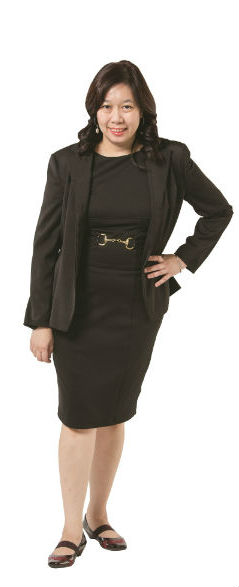 People forget that in 2008 through to 2012, the Sydney market was flat, while the Melbourne market went up and up. Now that Sydney has finally caught up, people are talking about a ‘bubble’, which is unfounded as there is still a shortage of housing.
People forget that in 2008 through to 2012, the Sydney market was flat, while the Melbourne market went up and up. Now that Sydney has finally caught up, people are talking about a ‘bubble’, which is unfounded as there is still a shortage of housing.
Instead of selling, Sydneysiders are taking out equity; hence there is less stock in the market. Australia is also geographically close to Asia. If Asians want to send their kids to a Western university, Australia is closer than the UK and US, and Sydney and Melbourne would be their first choice. Rich migrants’ first ports of call would be Sydney for its breathtaking views and cosmopolitan vibe and Melbourne for its lower entry point in terms of property prices, and its ‘liveability’. Sydney is made up of pockets, hence I believe areas of Blacktown, Penrith and Liverpool still have a way to grow.
I am impressed not just by the fact that infrastructure is given the green light but by the lightning speed with which it is being built. Major roads are being built around Badgerys Creek in preparation for construction of the new airport. The introduction of no stamp duty as a first home buyer incentive in NSW for property purchases of up to $600,000, and the fact that the government is so ‘Sydneycentric’ in its allocation of infrastructure expenditure means the Sydney market will continue its upward trajectory. The Badgerys Creek airport is a game changer; once built, the prices in the west will skyrocket again.
Why the west? Experts always tell you to invest within 10km of CBD, and since I cannot afford the Sydney CBD, I look to Sydney’s second CBD, Parramatta. The trains there are superb – where else can you get to work in half an hour and still buy affordable housing more cheaply? And they are planning to link Parramatta to the Sydney CBD in 15 minutes by building new, faster train stations.
My preferred suburbs are around the St Marys and Whalan areas. They are sandwiched halfway between major job centres at Penrith and Parramatta, and within 45 minutes’ commuting distance of the Sydney CBD by train. I would snap up an existing house with granny flat potential, at around the $470,000 to $500,000 mark. In the Blacktown area, most homes like this are already in the $600,000– $750,000 price range, so any neighbouring suburbs under these prices are a good buy in my view.
I would buy this on the premise that I would renovate the house, take out equity, and build a granny flat at a cost of about $130,000, to get a rental return of $670 per week combined. Houses with granny flats in places like Wiley Park sell for over $1m, and I have no doubt that prices in the St Marys area will continue to climb and match this one day.
I would buy a house on the biggest parcel of land I could afford, to land bank for future development.
In addition, I’d invest in a twobedroom apartment in Kingswood.
In the suburbs around Sydney’s four main universities – Sydney, Macquarie, UTS and NSW – units are priced at around $750,000 and above. Units in Kingswood are next to the University of Western Sydney, which is the only university area in Sydney where you can buy a unit for around $340,000. The TAFE, Nepean Hospital and light industrial factories are also in the area, supplying a reliable stream of tenants.
..........................................................................
